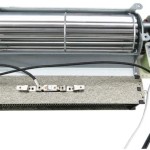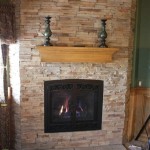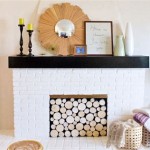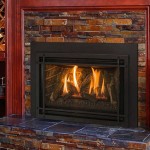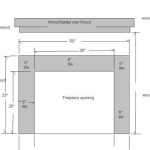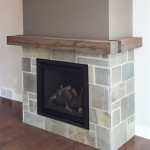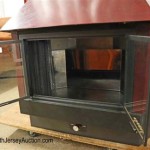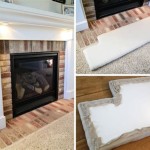Linear Outdoor Fireplace: A Comprehensive Overview
The linear outdoor fireplace has emerged as a popular design element in contemporary outdoor living spaces. Characterized by its elongated, horizontal shape, this type of fireplace offers both aesthetic appeal and functional warmth. Understanding the various aspects of linear outdoor fireplaces, from design considerations to installation requirements and maintenance practices, is crucial for homeowners and design professionals alike.
Linear fireplaces provide a dramatic focal point for patios, decks, and other outdoor areas. Their sleek, modern design integrates seamlessly with various architectural styles, adding a touch of sophistication and elegance. Beyond aesthetics, these fireplaces offer efficient heating, extending the usability of outdoor spaces into cooler months. Furthermore, advancements in technology have led to the development of features such as remote control operation, adjustable flame heights, and safety mechanisms, enhancing the user experience.
The selection of a linear outdoor fireplace involves several key considerations. These include the size and layout of the outdoor space, the desired fuel type (gas, propane, or electric), the architectural style of the home, and local building codes and regulations. Careful planning and professional installation are essential to ensure safe and efficient operation, as well as compliance with relevant standards.
Design Considerations for Linear Outdoor Fireplaces
The design process for a linear outdoor fireplace should begin with a thorough assessment of the intended location. Factors such as the size of the space, prevailing wind direction, and proximity to structures should be taken into account. The dimensions of the fireplace itself, including its length, height, and depth, need to be proportionate to the surroundings. A fireplace that is too large can overwhelm a small space, while one that is too small may not provide adequate heat or visual impact.
Material selection is another critical aspect of the design process. Common materials used for linear fireplace construction include stainless steel, concrete, stone, and brick. Stainless steel offers a modern, industrial look and is resistant to corrosion. Concrete provides a versatile option that can be cast into various shapes and finishes. Stone and brick impart a more traditional aesthetic and can be used to complement existing architectural features. The choice of material should be based on aesthetic preferences, durability requirements, and budget considerations.
The integration of the fireplace with other outdoor design elements is also essential. Consider incorporating seating areas, landscaping, and lighting to create a cohesive and inviting outdoor space. Low walls or benches can be built around the fireplace to provide additional seating and define the space. Strategic placement of plants can soften the hard edges of the fireplace and create a more natural environment. Outdoor lighting can enhance the ambiance and extend the usability of the space into the evening hours.
Furthermore, customization options can enhance the visual appeal of the linear fireplace. These options include adding decorative media such as fire glass or ceramic logs, incorporating LED lighting to illuminate the flames, and installing a surrounding mantel or hearth. These features can be tailored to reflect individual tastes and complement the overall design of the outdoor space.
Installation Requirements and Safety Standards
The installation of a linear outdoor fireplace requires careful planning and adherence to safety standards. Depending on the fuel type, the installation process may involve connecting to a gas line, installing a propane tank, or running electrical wiring. It is crucial to hire qualified professionals with experience in fireplace installation to ensure that all connections are made correctly and that the fireplace operates safely and efficiently.
Gas-powered fireplaces require a gas line connection that meets local codes and regulations. The gas line should be properly sized to provide adequate gas flow to the fireplace. A shut-off valve should be installed near the fireplace to allow for easy maintenance and emergency shut-off. A licensed gas fitter should perform the gas line connection and ensure that it is leak-free.
Propane-powered fireplaces require a propane tank that is properly sized and installed according to safety guidelines. The tank should be located in a well-ventilated area and should be protected from direct sunlight and extreme temperatures. A regulator should be installed to control the gas pressure to the fireplace. A qualified propane technician should perform the propane tank installation and ensure that it is leak-free.
Electric fireplaces require an electrical connection that meets local codes and regulations. The electrical wiring should be properly sized to handle the electrical load of the fireplace. A dedicated circuit breaker should be installed to protect the electrical system. A licensed electrician should perform the electrical wiring and ensure that it is grounded properly.
In addition to fuel source requirements, it is important to adhere to clearance requirements for combustible materials. The fireplace should be installed at a safe distance from walls, ceilings, and other flammable surfaces. Consult the manufacturer's instructions for specific clearance requirements. It is also important to install a fire extinguisher near the fireplace in case of emergency.
Local building codes and regulations may require permits for the installation of outdoor fireplaces. It is essential to check with the local authorities to determine the permit requirements and to ensure that the installation complies with all applicable codes. Failure to obtain the necessary permits can result in fines or delays.
Maintenance and Care of Linear Outdoor Fireplaces
Regular maintenance and care are essential to ensure the longevity and optimal performance of a linear outdoor fireplace. The frequency and type of maintenance required will depend on the fuel type, the materials used in construction, and the frequency of use.
For gas-powered and propane-powered fireplaces, it is important to inspect the burner and pilot light regularly for any signs of debris or corrosion. Clean the burner and pilot light with a soft brush or vacuum cleaner. Check the gas line or propane tank for leaks. A soapy water solution can be used to detect gas leaks. If a leak is detected, turn off the gas supply immediately and contact a qualified technician.
For electric fireplaces, it is important to clean the heating element and fan regularly to remove dust and debris. Disconnect the power supply before cleaning the fireplace. Use a soft brush or vacuum cleaner to clean the heating element and fan. Check the electrical wiring for any signs of damage. If any damage is detected, contact a qualified electrician.
Regardless of the fuel type, it is important to clean the exterior surfaces of the fireplace regularly to remove dirt and grime. Use a mild soap and water solution to clean the surfaces. Avoid using abrasive cleaners or scouring pads, as these can damage the finish. For fireplaces made of stone or brick, a pressure washer can be used to remove stubborn stains.
Protect the fireplace from the elements during periods of non-use. A waterproof cover can be used to protect the fireplace from rain, snow, and wind. This will help to prevent corrosion and extend the lifespan of the fireplace.
Inspect the fireplace regularly for any signs of damage, such as cracks, rust, or loose components. Repair any damage promptly to prevent further deterioration. Contact a qualified technician for any repairs that require specialized knowledge or tools.
By following these maintenance and care guidelines, homeowners can ensure that their linear outdoor fireplace remains a beautiful and functional addition to their outdoor living space for many years to come. Proper maintenance not only extends the lifespan of the fireplace but also ensures safe and efficient operation.
Considering these design, installation, and maintenance principles is crucial when incorporating a linear outdoor fireplace into any outdoor space. The result is a functional and aesthetically pleasing addition that enhances the outdoor living experience.

Majestic Lanai 60 Linear Outdoor Gas Fireplace Odlanaig North Country Fire

Superior 36 Outdoor Linear Fireplace Fine S Gas

Outdoor Lifestyles 60 Lanai Gas Linear Fireplace

Regency Horizon Hzo60 Linear Outdoor Gas Fireplace

Rose 60 Inch Linear Outdoor Fireplace Fine S Gas

Empire Outdoor 60 Inch See Through Linear Fireplace With Fire Glass Oll60sp12s Dg1 Hvacdirect Com

Empire Rose Coastal Lnr 60 St Vf Outdoor Gas Fireplace Oll60sp North Country Fire

Linear Gas Fireplace Burner System Outdoor

Lanai 60 Inch Outdoor Single Sided Linear Gas Fireplace Majestic Norcal Fire Grill

Majestic Lanai 48 Linear Outdoor Gas Fireplace Odlanaig North Country Fire
Related Posts

